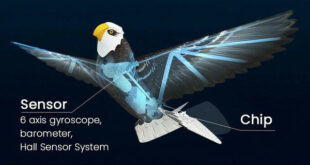Introduction
RC flying birds are an exciting and innovative segment of the RC world. Combining the joy of traditional RC flying with the realism of ornithology, RC flying birds offer enthusiasts a unique experience. This article delves into the fascinating world of RC flying birds, exploring their features, benefits, and tips for getting started.
What Are RC Flying Birds?
RC flying birds are remote-controlled models designed to mimic the flight and appearance of real birds. Unlike traditional RC planes or drones, these models replicate the flapping wing motion of birds, providing a more natural and captivating flying experience. They come in various sizes and designs, often modeled after different bird species.
Features and Technology
1. Realistic Flight Patterns
One of the most striking features of RC flying birds is their ability to mimic the flight patterns of real birds. The flapping wing mechanism allows for smooth, realistic movements, making them look almost lifelike in the air. This realism is enhanced by advanced engineering and design, ensuring the wings move in a synchronized and natural manner.
2. Durable Materials
RC flying birds are typically made from lightweight, durable materials such as carbon fiber, nylon, and high-grade plastics. These materials ensure the models are both resilient and agile, capable of withstanding the occasional crash while maintaining excellent flight performance.
3. Advanced Control Systems
Modern RC flying birds are equipped with sophisticated control systems, allowing for precise maneuverability. Many models come with intuitive remote controls that offer various flight modes, from beginner to advanced, making them accessible to hobbyists of all skill levels.
Benefits of RC Flying Birds
1. Educational Value
RC flying birds are not only entertaining but also educational. They offer a hands-on way to learn about aerodynamics, engineering, and even biology. By observing and controlling these models, enthusiasts can gain a deeper understanding of how birds fly and the principles of flight mechanics.
2. Outdoor Recreation
Flying RC birds is a great way to enjoy the outdoors. Whether in a park, a field, or a dedicated flying club, this hobby encourages people to get outside and engage in physical activity. It’s a perfect blend of technology and nature, promoting both mental and physical well-being.
3. Community and Social Interaction
The RC flying bird community is vibrant and welcoming. Hobbyists often gather to share tips, showcase their models, and enjoy group flying sessions. This social aspect fosters a sense of camaraderie and provides opportunities to make new friends with similar interests.
Getting Started with RC Flying Birds
1. Choosing the Right Model
For beginners, it’s essential to start with a model that’s easy to control and forgiving in crashes. Look for RC flying birds with sturdy construction and beginner-friendly features. As you gain experience, you can upgrade to more advanced models with enhanced capabilities.
2. Flight Modes
Spend time getting familiar with the remote control and the different flight modes available. Practice basic maneuvers in an open area free of obstacles to build your confidence and skill.
3. Regular Maintenance
Regular maintenance is crucial to keep your RC flying bird in top condition. Check for any wear and tear on the wings, tail, and control systems. Ensure the battery is fully charged and the remote control is functioning correctly before each flight.
Conclusion
RC flying birds offer a unique and exhilarating experience for hobbyists of all ages. Combining realistic flight, durable materials, and advanced technology, these models provide endless hours of fun and learning. Whether you’re a seasoned RC enthusiast or a newcomer to the hobby, RC flying birds are a captivating way to explore the skies. Embrace the joy of flight and discover the amazing world of RC flying birds today!



